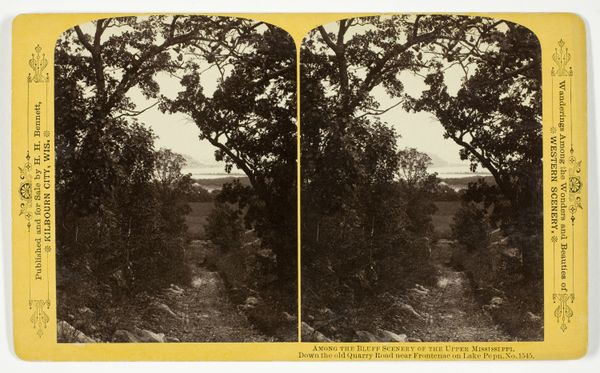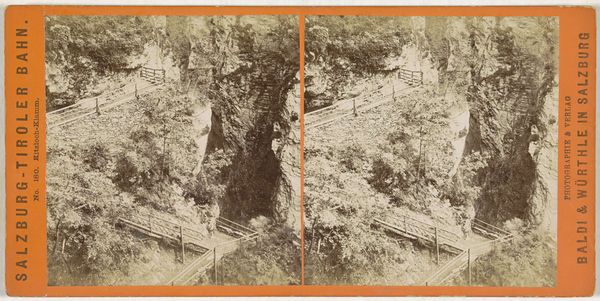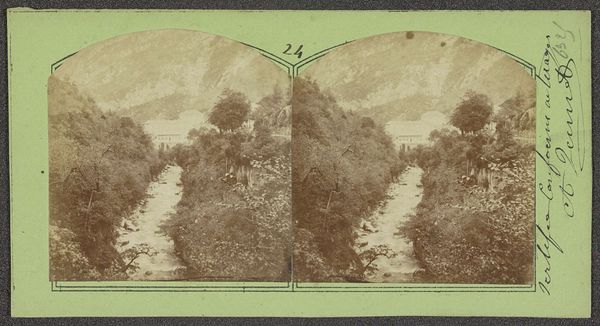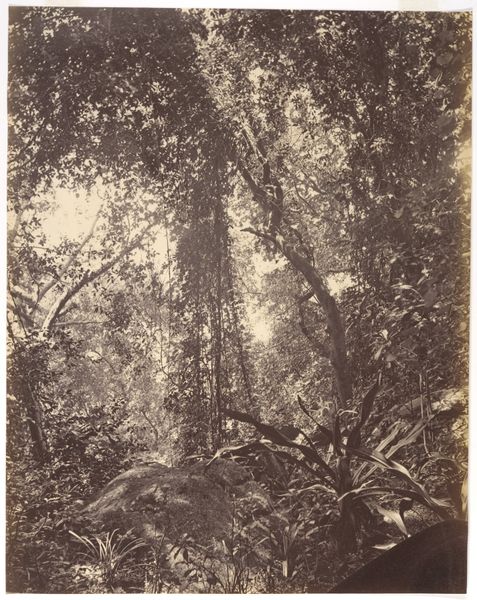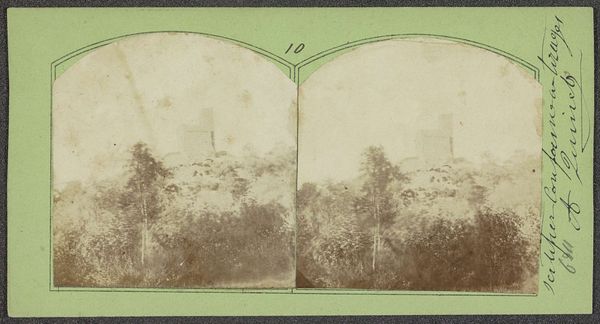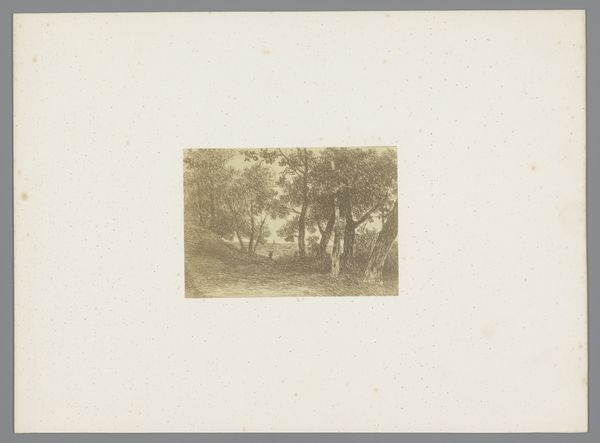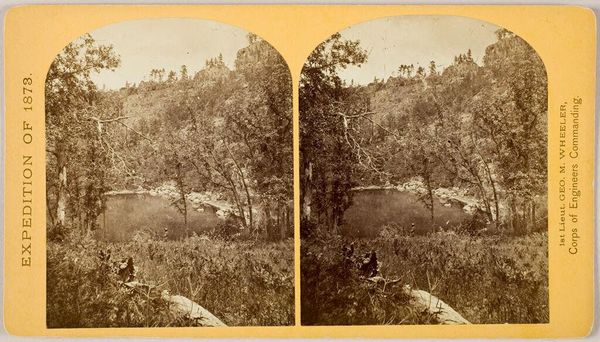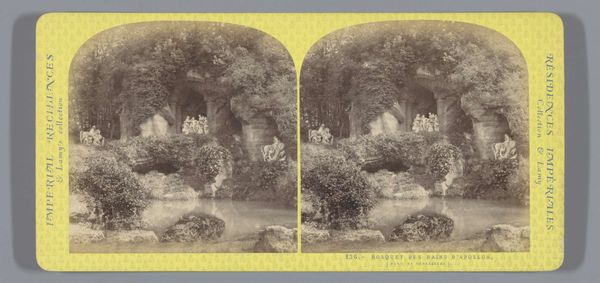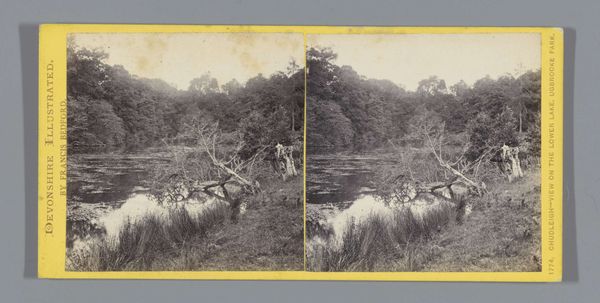
#
pale palette
#
water colours
#
pastel soft colours
#
light coloured
#
coloured pencil
#
mountain
#
pastel tone
#
soft and bright colour
#
watercolour bleed
#
watercolour illustration
#
watercolor
Dimensions: height 85 mm, width 170 mm
Copyright: Rijks Museum: Open Domain
Curator: A somewhat muted visual experience, don't you think? I feel a certain… stillness emanating from the photograph. Editor: Indeed. Today, we are examining an image entitled "Bülowshöhe te Harz", attributed to E. Rose, created sometime between 1855 and 1880. Curator: What I observe immediately is the composition; the stark monumentality of the central rock formation is quite striking, the eye is drawn to its craggy texture, isn’t it? Editor: Certainly. That geological form is emphasized because it appears in both sides of the stereographic card. Bülowshöhe refers to a specific vantage point or landmark, which speaks to the emerging culture of landscape appreciation and tourism in the mid-19th century, the romantic experience with nature… the impulse to capture and share scenic views of particular sites, how would you describe it? Curator: The composition is compelling. The play of light across the stone and the textural density achieved through the tonal variation makes for a fascinating surface to scan. Though not explicitly painterly, the handling of tones certainly feels carefully considered. Editor: It's intriguing to think about how photography served to democratize art and expand access to cultural landscapes for a growing middle class and how commercial image production responded to this trend of romantic tourism and landscape veneration in 19th-century Germany. What about that romantic appreciation of landscape informs this photo's production and distribution? Curator: The monochrome palette contributes profoundly to that sense of sublime romanticism, wouldn't you agree? Editor: Undeniably. In those days, to capture that scenic point became more widely accessible to new consumers than a oil painting. So they want a taste for what aristocracy enjoys and keep it as their own and feel they are also traveling and have access to natural monuments as others. Curator: From a strictly pictorial perspective, it is the tension between texture and implied depth, I feel it resonates very harmoniously within this composition. Editor: I find myself contemplating its significance in shaping public perceptions of these landmarks as icons, commodities, or objects for political veneration. Curator: So much can be unpacked simply by considering its intrinsic formal characteristics, its line, mass, volume and tone.. Editor: While I am led to the artwork's reception and circulation, its use and interpretation during an era marked by tremendous cultural change and emergent national identities. It would be exciting to study public registers or commercial material to dive deeper into how it moved and was conceived in its day-to-day consumption.
Comments
No comments
Be the first to comment and join the conversation on the ultimate creative platform.

